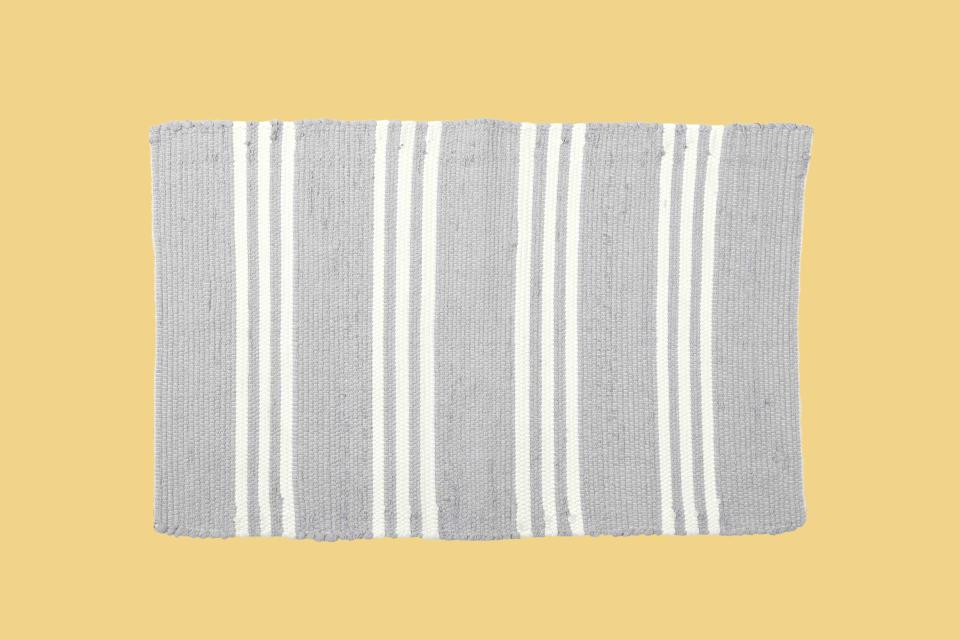How to Choose a Rug for a Small Space, According to the Pros
Choosing the right rug can completely transform a room

Liudmila Chernetska/Getty Images
Nothing can ruin a room's design like a rug that doesn't fit the space. And just like most parts of living in a small home, finding the perfect rug can be challenging. That's why, as a New York City apartment dweller, I was very excited to learn about Ernesta, a new brand that focuses on custom rugs to fit any room perfectly. It works like this: you pick out a rug you love (or, you can buy a sample box of 5 to see in person for $25), and then work with one of their designers who help walk you through the process and even create renderings of different suggested rug sizes to see how it'll look in your space. Once you've decided on an option, you send your room's measurements, and voila! Your rug will be to you in no time. Neat!
I chatted with Natasha Rivera, Ernesta's design assistant, to get the best tips and tricks for choosing the right rug for a small space.
Why is choosing the right rug for a small space so important?
"Rugs that don’t properly fit a room can disrupt the overall room design and compromise a smaller space," says Rivera. "A common mistake is opting for a rug that's too small, which can make the confined space appear more crowded and less functional. While patterns and colors may inspire you at first, choosing the perfect size is crucial for elevating and transforming smaller spaces."
Rivera says that choosing the right-sized rug is a wonderful and easy way to transform smaller spaces. "The right-sized rug, acting as a foundational element, will seamlessly tie together separate elements in your compact room, making it feel larger, open and more cohesive."
How to choose the right rug for a small space
"When in doubt, bigger is (usually) better," explains Rivera. "A common mistake we see is rugs that are too small for a space, making small spaces appear more crowded. A bigger rug can create an illusion of openness, but you also don’t want to go too large as that can overwhelm furniture instead of enhancing it."
Ideally, she suggests measuring your rug to fit your room, not to fit your furniture. "Take into account factors such as doors, openings, and distance from the walls. Your rug serves as an anchor for your furniture. I generally advise incorporating the majority, if not all, of your furniture on the rug's surface. The rug should encapsulate everything in the room."
How to measure your room for a rug
Rivera said when you're looking at your room, you should pay close attention to the proportions. "A rug that covers a significant portion of the floor without overpowering the space strikes the right balance. Regardless of the room type, plan for at least 6 inches of space from rug edges and the walls—that also includes door clearances—don’t put your rug right up against the doorway."
How do you layer rugs in a small space?
"When layering rugs in a small space, begin with a larger base rug and then introduce variety by combining textures that speak to the overall room design," suggests Rivera. "While layering works well in open floor plans, avoid layering rugs in every area of your space. Using multiple rugs might contribute to a feeling of clutter and busyness." She suggests opting for a single, larger rug, which can elongate the space, creating the illusion of a larger room. "Save layering to highlight focus areas for hybrid spaces, like an office area within a living room or living room-playroom combo."
For more Real Simple news, make sure to sign up for our newsletter!
Read the original article on Real Simple.

